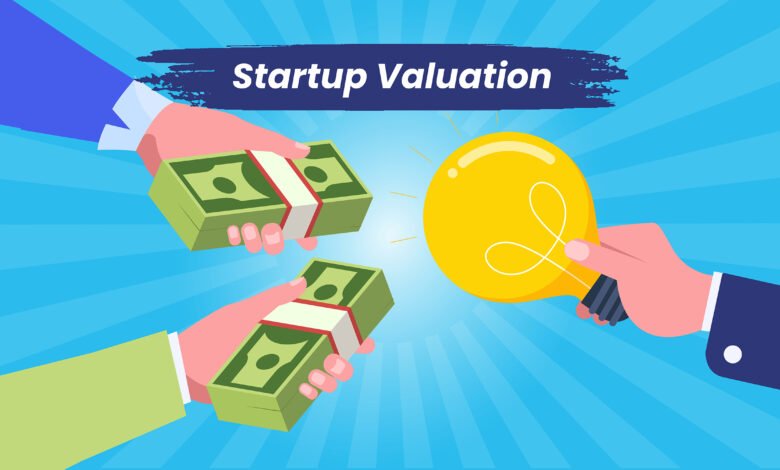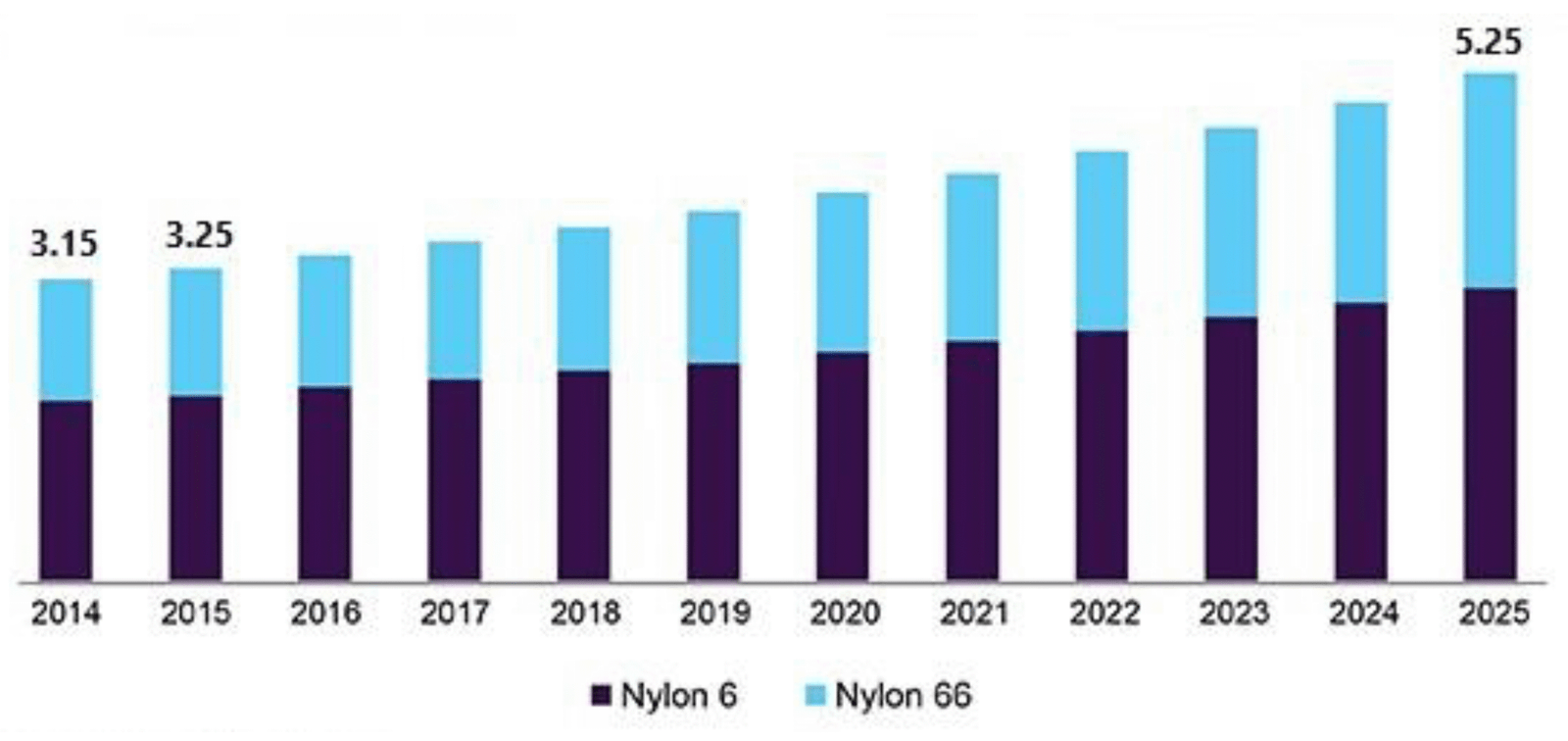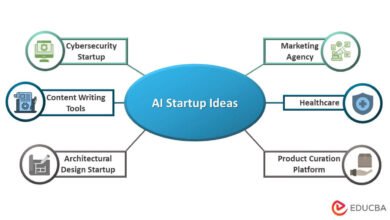AI Startup Valuations Are They Realistic Right Now
AI startup valuations reach unprecedented heights in 2025. Explore whether billion-dollar valuations are realistic, valuation multiples, and market.

The AI startup valuation landscape has transformed dramatically over the past two years, creating a phenomenon unlike anything the venture capital market has witnessed before. In 2025, AI companies now command average valuations 3.2 times higher than traditional tech companies, with some startups reaching billion-dollar status within months of their founding. OpenAI’s valuation has skyrocketed to $324 billion following a $40 billion funding round, while Anthropic, another AI unicorn, recently secured $5 billion at a $170 billion valuation. These astronomical figures beg a critical question: Are AI startup valuations actually realistic, or are we witnessing a speculative bubble reminiscent of the dot-com era?
The sheer volume of capital flowing into the artificial intelligence startup ecosystem tells a compelling story. In 2025, AI startups attracted $89.4 billion in global venture capital, representing 34% of all VC investment despite comprising only 18% of funded companies. Nearly 500 AI unicorns—private companies valued at $1 billion or more—now exist, collectively worth $2.7 trillion. This represents a 100-fold increase in billion-dollar AI companies since 2023, with an average of 100 new unicorns born annually in this sector alone. Yet beneath these eye-catching numbers lies a more nuanced reality. While some AI startups demonstrate genuine revenue growth and strong unit economics, others command premium valuations based primarily on hype, speculative technology potential, and investor fear of missing out. Whether AI company valuations are justified requires examining the fundamental drivers of AI startup valuation, the metrics used to assess worth, and the risks inherent in this high-flying market.
What Drives AI Startup Valuations Today?
AI startup valuation depends on fundamentally different factors than traditional software companies. While SaaS businesses are typically valued using revenue multiples, AI companies present a far more complex valuation puzzle. The primary drivers of AI business valuations include proprietary technology, data assets, algorithmic capabilities, and long-term market potential—many of which are extraordinarily difficult to quantify accurately.
Proprietary technology and data moats represent the cornerstone of an AI company’s value. Unlike traditional software, where switching costs may be relatively low, AI models improve dramatically with data accumulation, creating compounding competitive advantages. A startup with a superior dataset and proprietary algorithms can justify premium valuations because these assets create durable defensibility. Additionally, AI valuation multiples reflect the belief that winning companies in artificial intelligence will capture disproportionate market share due to winner-take-all dynamics. This conviction among investors drives up startup valuations in the AI sector even when companies lack substantial revenue.
The speed of adoption and market traction also significantly influence AI startup valuations. Companies demonstrating rapid customer acquisition, strong retention metrics, and clear monetization pathways command premium AI company valuations compared to their pre-revenue counterparts. However, even this metric can be misleading—some AI startups achieve impressive adoption metrics through free trials and early access programs that haven’t yet converted to meaningful revenue streams. The talent and team composition matter enormously for AI startup valuation as well, since the sector faces acute talent shortages. A founding team with deep AI research credentials or prior exits commands substantially higher startup valuations than less experienced teams building similar products.
AI Valuation Multiples: How High Is Too High

The gulf between AI valuation multiples and traditional software company valuations has become almost incomprehensible. As of 2025, AI startups trading in funding rounds achieve median EV/Revenue multiples of 25–30x, with premium companies reaching 100x or higher. This represents a stunning contrast to public SaaS companies, which typically trade at 6x EV/Revenue or lower. This gap raises an inescapable question: What justifies such extreme AI company valuation multiples?
The answer reveals the fundamental tension in today’s AI startup valuation market. Fundraising rounds price future option value and market share dominance, while M&A deals price control, integration risk, and detailed financial diligence. Consequently, AI valuation multiples in funding rounds consistently exceed those in acquisition transactions. A startup might command a 30x AI revenue multiple in Series B fundraising, only to be acquired at 8x revenue two years later when the acquirer conducts rigorous diligence. This divergence suggests that some AI startup valuations rest on optimistic assumptions about future growth that may not materialize.
Research into AI startup valuation multiples reveals significant sectoral variation. Infrastructure, cybersecurity, and applications with defensible data moats tend to command the highest AI company revenue multiples, while more commoditized models face valuation compression. For context, early-stage AI startups in funding rounds show inflated valuation multiples driven primarily by technological potential and market size, while later-stage companies face greater scrutiny on unit economics and path to profitability. The shift toward demanding sustainable economics represents a material change from the early pandemic era, when growth at any cost dominated investor thinking.
The Realistic Valuation Benchmark: Stage-by-Stage Analysis
What constitutes a realistic AI startup valuation requires examining typical valuations at each funding stage. As of 2025, median pre-money valuations break down as follows: pre-seed approximately $3.6 million, seed rounds around $10 million, Series A roughly $45.7 million, Series B near $366.5 million, and Series C approximately $795.2 million. These figures provide important benchmarks for founders evaluating their own AI company valuations against market reality.
However, these medians mask enormous variation. Top-quartile AI startups command valuations 2–3 times higher than these medians, while struggling startups may raise at substantial discounts. The variance reflects real differences in technology, team quality, traction, and market conditions. A startup with demonstrated product-market fit, strong customer retention, and clear monetization can justify valuations substantially above median, while a pre-revenue research effort should raise below median unless the founding team possesses exceptional credentials.
Founders and investors assessing whether AI startup valuations are realistic should consider three critical dimensions. First, they should calculate valuation-to-funding ratios, comparing the company’s valuation to total capital raised to date. Second, they should examine revenue multiples rigorously, calculating ARR multiples and comparing them to peers in similar verticals and at similar stages. Third, they should build cash flow models that test whether AI company value assumptions hold under pressure. A startup justifying a high AI valuation should be able to articulate specific technical advantages, customer adoption metrics, and realistic paths to profitability.
The Cash Flow Reality: Where Valuations Break Down
Perhaps the most revealing critique of current AI startup valuations comes from fundamental financial analysis. A cash flow-based approach to AI company valuation exposes why many contemporary AI startup valuations are fundamentally disconnected from economic reality. While revenue multiple methods treat all revenue as equally valuable, cash flow methods require that founders and investors explicitly model the actual economics of delivering AI services.
The challenge confronting AI startups is that compute costs scale superlinearly with model size and usage. Training costs, inference expenses, and infrastructure requirements don’t decrease toward zero as companies scale—they often increase. Traditional software businesses benefit from near-zero marginal costs at scale, enabling exponential margin expansion. AI companies face the opposite dynamic: as usage increases, compute costs scale faster than revenue, compressing margins. This uncomfortable truth demands that AI startup valuations explicitly account for these cost structures.
Consider OpenAI’s publicly disclosed financials: the company spent over $5 billion on compute infrastructure against approximately $4.9 billion in revenue. This revelation exposed the bankruptcy of treating OpenAI’s revenue as equivalent to SaaS revenue when assessing AI company valuations. While OpenAI possesses brand dominance and network effects justifying premium valuations, smaller AI startups cannot rely on these advantages. For most AI companies, achieving unit economics that support premium startup valuations requires either achieving massive scale that absorbs infrastructure costs, discovering proprietary efficiency innovations that reduce compute requirements, or building applications with sufficiently high customer willingness-to-pay to justify infrastructure expenses.
Are AI Startup Valuations in a Bubble? Market Signals and Warning Signs
The question of whether current AI startup valuations represent a bubble has become increasingly contentious among sophisticated investors and analysts. Several warning signals suggest that at least portions of the AI startup valuation market have decoupled from fundamental value creation.
First, AI startup valuation growth has dramatically outpaced revenue growth. Many startups that raised at premium AI company valuations 12 months ago are struggling to raise subsequent rounds when investors demand demonstrated economics. Second, the definition of “traction” has become increasingly elastic. Some AI startups command billion-dollar valuations based primarily on pilot programs with large enterprises, rather than actual customer revenue. Third, the velocity of AI valuation escalation has become suspicious—some startups have doubled AI startup valuations in as little as 200 days, in the absence of commensurate revenue acceleration or technology breakthroughs.
However, this doesn’t necessarily mean the entire AI startup valuation market is irrational. Capital continues flowing toward AI companies because fundamental technological and commercial shifts are genuinely underway. The emergence of applications that demonstrably improve business outcomes creates legitimate optionality justifying premium valuations for companies that capture this opportunity. The critical distinction lies between startups with believable competitive advantages, growing unit economics, and clear paths to profitability (which may justify premium AI company valuations), and pre-revenue startups raising on pure speculation.
How Investors Evaluate AI Startup Valuations: Beyond Revenue Multiples
Sophisticated investors have evolved their approaches to AI startup valuation beyond crude revenue multiple frameworks. Modern AI company valuation methods incorporate multiple lenses to triangulate realistic worth.
Unit economics analysis forms the foundation of credible AI startup valuation frameworks. This requires customer acquisition costs (including compute resources for trials), gross margins after accounting for inference expenses, and customer lifetime value based on actual retention data. Pre-revenue AI startups must build bottom-up models grounded in pilot programs, customer feedback, and detailed technical specifications. The goal isn’t false precision—it’s the fundamental economic drivers that will ultimately determine whether the company survives and thrives.
Scenario analysis provides a more honest framework for AI startup valuation than single-point forecasts. Given the binary risks inherent in AI development (technology may or may not work, competitive advantages may or may not hold, markets may or may not adopt), realistic AI company valuations should reflect probability-weighted outcomes across bull, base, and bear cases. This approach explicitly acknowledges the uncertainty surrounding AI startup valuations while still enabling coherent investment decisions.
Technical defensibility assessment has become increasingly important for AI startup valuation. Investors now carefully distinguish between companies with moats (proprietary data, algorithms that improve with scale, switching costs, and regulatory advantages) and commodity producers in nascent markets where competitive advantages quickly erode. AI companies with genuine defensibility can justify premium valuations, while undifferentiated players face compression pressure.
Capital Deployment Trends and Market Concentration

AI startup valuations requires recognizing broader trends in how capital deploys across the AI startup ecosystem. The 2025 funding landscape shows concentration at the top, with large mega-rounds to established players dominating headline figures, while smaller startups face meaningful valuation pressure.
Corporate venture capital now represents 43% of AI funding, reflecting the strategic importance of AI capabilities for established technology companies. This shift has meaningful implications for AI startup valuations—corporate investors often apply different valuation frameworks than traditional venture capitalists, focusing on strategic alignment rather than pure financial returns. Strategic investors sometimes accept lower multiples if technology fits their core business, while other times they drive valuations dramatically higher because of strategic optionality.
Geographic variation remains significant. While North America continues dominating absolute funding volumes, Europe has demonstrated 41% year-over-year growth, driven by government support and emerging AI hubs. This geographic expansion matters for AI startup valuations because different regions apply different valuation frameworks, and investor bases have different return expectations.
Red Flags in Inflated AI Startup Valuations
Discerning realistic AI startup valuations from inflated ones requires attention to specific red flags that suggest a company may be overvalued. First, watch for valuations based primarily on market size arguments rather than demonstrated customer traction. A startup serving a $100 billion market may deserve a premium valuation if it has achieved genuine market leadership, but merely existing in a large market doesn’t justify high AI company valuations.
Second, be skeptical of AI startup valuations justified primarily through revenue multiples without accounting for unit economics. If a startup is losing money on every customer despite growing revenue, multiples-based AI company valuation frameworks obscure this reality. Third, examine whether revenue growth is accelerating or decelerating at comparable valuations. A startup raising Series B at 20x revenue while growth decelerates faces valuation compression risk.
Fourth, assess whether the competitive moat justifying AI startup valuations is widening or narrowing. If competitors are closing technological gaps, reducing cost structures, or capturing customers, AI company valuations should face pressure regardless of near-term revenue trends. Fifth, scrutinize the founding team’s prior execution track record. Exceptional teams can justify premium AI startup valuations even with unproven products, but first-time founders require higher bars.
The Correction Underway: Market Normalization
Evidence increasingly suggests the AI startup valuation market is beginning to normalize from peak exuberance. Companies that were raised on revenue multiple hype are struggling to raise follow-on rounds when investors demand sustainable economics. Meanwhile, AI startups with credible business models and disciplined capital allocation continue attracting capital at fair valuations. This bifurcation reflects market maturation—not market collapse, but rather differentiation between substantive business models and speculative plays.
The successful survivors in this AI valuation correction share consistent characteristics: unit economics focus, demonstrated customer value proof, technical defensibility, and financial discipline. These AI companies aren’t reducing burn rates indiscriminately—they’re optimizing for sustainable growth, not growth at any cost. Investors succeeding in this environment combine commitment to fundamental analysis with flexibility regarding next-generation technologies that reshape competitive landscapes.
Sector-Specific Valuation Variations
AI startup valuations vary dramatically across sectors, reflecting different risk profiles, competitive dynamics, and monetization models. Generative AI and large language model infrastructure command the highest multiples, with companies like OpenAI and Cohere achieving 100x+ revenue multiples. These premium valuations reflect the winner-take-all dynamics of foundation models and the massive TAM opportunity. However, the sustainability of these valuations depends on these companies maintaining technological leadership and building defensible moats—neither outcome is guaranteed.
Enterprise AI applications across healthcare, finance, and legal demonstrate strong valuation growth, though at modestly lower multiples than infrastructure. These sectors benefit from high customer willingness-to-pay and clearer paths to revenue, making AI company valuations somewhat more defensible. However, they also face higher regulatory risk and may experience valuation compression if regulatory uncertainty increases.
Commodity AI applications and commoditized services face valuation compression pressure as competitive differentiation erodes. These AI startups must achieve scale to justify valuations, creating a challenging dynamic where only the largest winners achieve premium multiples while others face meaningful valuation resets.
More Read: How AI Startups Get Funded, What Investors Look For
Conclusion
AI startup valuations in 2025 reflect genuine technological transformation, massive capital allocation, and justified excitement about artificial intelligence’s commercial potential—but they also contain real speculative excess in portions of the market. The realistic answer to whether AI company valuations are justified is nuanced: some are, many aren’t. The companies with strong unit economics, defensible competitive advantages, growing customer adoption, and disciplined capital deployment deserve premium valuations even in today’s demanding market environment.
Conversely, pre-revenue AI startups raising on pure technological speculation or undifferentiated commodity applications face meaningful valuation risk. The AI startup valuation market is normalizing from peak exuberance, creating meaningful opportunities for disciplined founders and investors who distinguish between sustainable business models and speculative hype. Success requires moving beyond crude revenue multiples toward sophisticated cash flow analysis, scenario planning, and rigorous unit economics assessment. As the market matures, AI startup valuations will increasingly reflect actual business fundamentals rather than pure sentiment.











